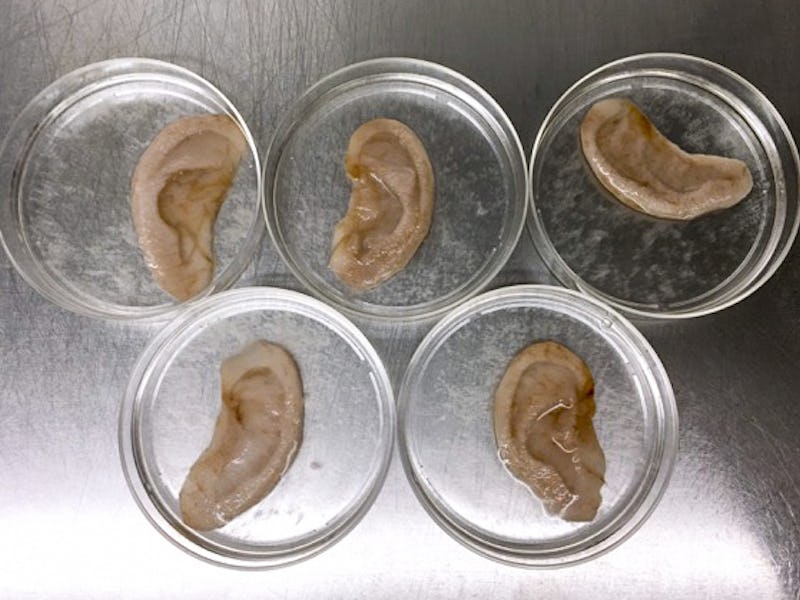Mad Scientist Invents Franken-Fruit, Turns Apples Into Ears
Using fruit as a scaffold for lab-grown body parts is less gross than the alternative.

Like emoji-using millennials everywhere, the fact that fruit sometimes resembles body parts has not escaped scientist and bio-hacker Andrew Pelling. Taking this idea to its extreme, the Canadian researcher is using fruit to create body parts; recently, he used apple slices to grow human ears, and he’s working on making spinal cords from asparagus. He’s not the first to try to build replacement body parts in the lab, but he’s the first to figure out how to do with without using expensive patented technology or dead bodies. And he’ll teach you how to do it, too, if that’s what you’re into.
Pelling, who runs a lab at Ottawa University that prioritizes creativity and experimentation over all else, is interested in using organic material as “scaffolding.” Scientists can already use cells to grow body parts — we’ve seen them create ears, rat arms, and hearts — but to do so they need a structure on which to grow the cells, similar to the way a wire framework underlies sculptures made of papier-mâché. These days, many scientists use 3D printing to make these scaffolds, often using biocompatible materials like collagen on which the cells can grow. Others source their molds from cadavers. Both options are expensive, and the latter is a little gross.
Apple slices are cheaper option than 3D-printed synthetic molds for using as scaffolds for growing human cells.
But you know what else makes a good scaffold? Cellulose, the tough protein framework that gives fruits (and all plant cells, really) their structure. And because you don’t need a 3D printer to turn an apple slice into a thing resembling an ear, it’s a much cheaper and less macabre option. Pelling has published this research in PLOS One and released open-source instructions for this technique, encouraging mad scientists everywhere to try this at home.
Taking a “totally innocent” slice of Macintosh, Pelling and his team removed all of the apple cells, leaving a cellulose scaffold, he explains in a recent TED Talk. Up close, this looks somewhat like the empty cells of a wasp’s nest, which Pelling then filled with cultured mammal cells. Over the course of 12 weeks, the apple slice had become an ear.
The cellulose scaffold left behind after removing apple cells is full of cavities, in which Pelling grew human cells.
Of course, Pelling’s ear can’t hear — at least not yet. Before they can even think about transplanting their fruit organs onto human bodies, Pelling’s team will have to figure out whether the apple cellulose will freak out the immune system or degrade over time.
But the project is less about the product than it is about the principle: Growing human organs doesn’t have to be prohibitively expensive, and the science behind it doesn’t have to be relegated to the lab. With his company Spiderwort, which builds tools for citizen scientists (like cell incubators) to carry out experiments at home, Pelling is hoping more of us will be inspired by the produce in our kitchens.